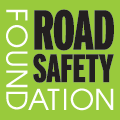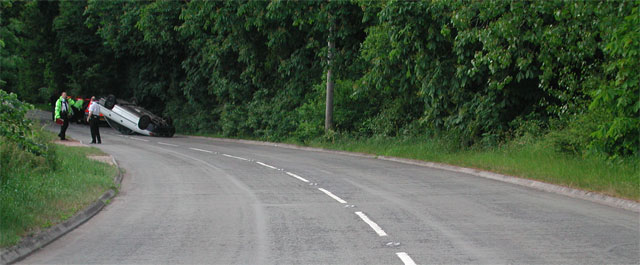SAVING LIVES, SAVING MONEY
Six thousand lives could be saved on Britain’s roads over the next ten years if just a fraction of the money currently spent on road maintenance was provided for infrastructure improvements.
Britain loses up to £30 billion (2.3% GDP) annually in the cost of road crashes, most of which falls on busy, targetable motorways and main roads according to Saving Lives, Saving Money: the costs and benefits of achieving safe roads, a report for the RAC Foundation by the Road Safety Foundation.
The report shows how, within existing budgets, 1-star and 2-star roads can be eliminated in the next decade, with benefits worth £25-£35 billion. Achieving the savings will require that road authority leaders are offered guidance to focus on the full costs and benefits of saving the most lives for the money available.
According to Saving Lives, Saving Money, the total cost of crashes is well estimated by the Department for Transport but the way costs fall on families, business, carers, NHS, emergency services and the insurance industry is poorly understood.
The report reveals the losses on roads for which different authorities are responsible. It finds the cost of fatal and serious crashes on the Highways Agency’s network amounts to £1.2bn annually. The cost of serious crashes on English local authority ‘A’ roads is £2bn.
It investigates how much it would cost to bring main roads with safety flaws such as missing safety fencing and unsafe junction layouts up to safety levels that should reasonably be expected – and the savings that would result. It proposes a 10-year safety programme to 2020 finding it would cost less than 10% of existing road budgets.
The report also calls for:
- The government’s upcoming Strategic Framework for Road Safety to make the Highways Agency – Britain’s single largest crash cost centre – the model of best practice from which UK authorities can learn;
- New good practice guidance for authority leaders and professionals on generating and evaluating safety schemes so 1- and 2-star roads are eliminated and dual carriageways and motorways are brought up to high safety standards
- Parliament and the Treasury to examine the value for money that can be provided by programmes to reduce death and injury and investigate how institutional barriers to rational investment and priority setting can be overcome;
- Technical improvements to the evaluation of crash costs and recording of serious crashes by police and hospitals, with more focus on long-term care and the true financial costs of road crashes to healthcare and emergency services;
- The insurance industry to study the initiatives in other countries where the cost of damage and injury claims has been driven down successfully through improved safety.
Professor Stephen Glaister, director of the RAC Foundation, says: “Given that Britons are more likely to die on the roads than in any other daily activity, this report should make us first angry, and then determined to act to see more lives saved – at little or no extra cost.
“We will never prevent all road accidents but we can do a considerable amount to reduce their effects simply by improving the road environment and making it as forgiving as possible. We understand road risks well enough to know how to cut this grim toll of death and injury, yet we fail to implement cheap and effective measures to combat them.
“Why do we continue to tolerate unsafe roads when the cost of bringing the network up to minimum standards is within what we already spend on our roads? It beggars belief that we are not redirecting resources to where they are most beneficial.”
Lord Dubs, chairman of the Road Safety Foundation, says: “Engineering improvements are typically low cost and last decades. Without using a simple measurement of infrastructure safety like star rating, road engineers will remain tongue-tied in trying to explain what can be achieved through proven measures. Without normal methods of cost-benefit analysis, high return safety programmes will continue to be ignored in favour of programmes which are well evaluated.”
“This report reveals that the average serious crash cost on a main road is more than £1m per kilometre in a decade. Such a high concentration explains why simple safety improvements can routinely pay back their costs within a year – and then go on saving lives and money on emergency services, hospitals and long term care.”
The report’s co-author and director of the Road Safety Foundation, Dr Joanne Hill, adds: “Most authorities evaluate safety schemes using first year rates of return which ignore the fact that engineering countermeasures deliver savings for decades. This stops life saving projects being compared with other lower return projects and prevents viable projects being generated on the scale justified and now being applied in other countries such as Australia, Netherlands and Sweden.”
“This year sees the launch of the UN’s Decade of Action for Road Safety. Saving Lives, Saving Money shows that we can significantly cut the cost of crashes between now and 2020, with substantial savings for the health services, long-term care, emergency services, businesses and families.” says Dr Hill.

